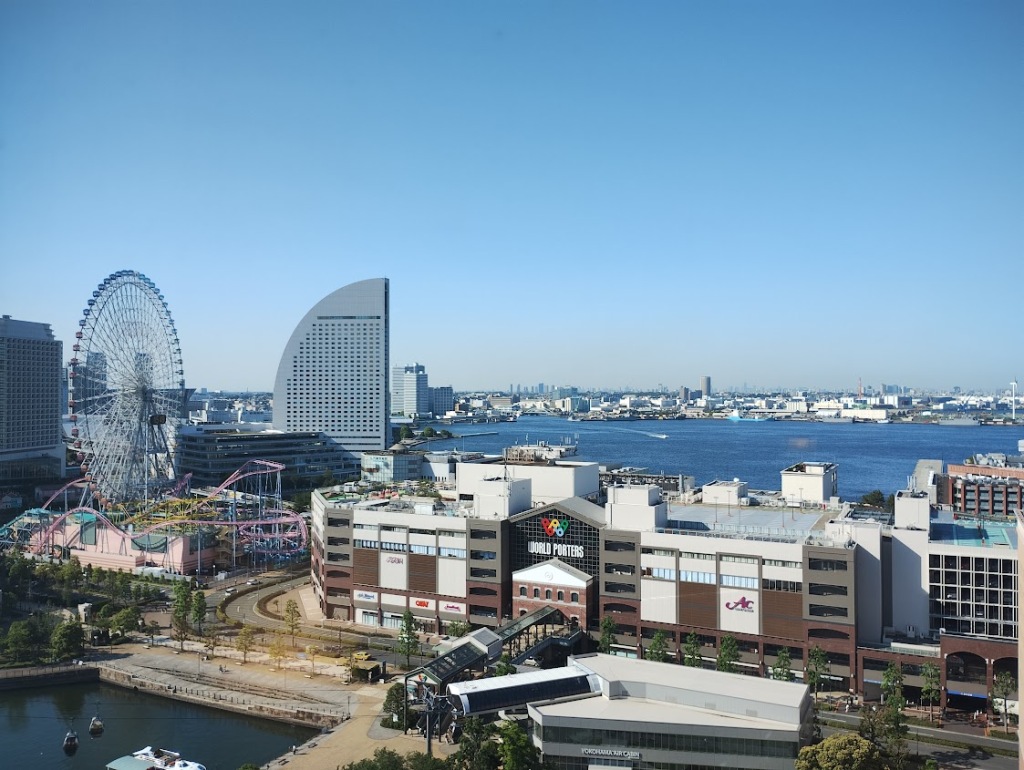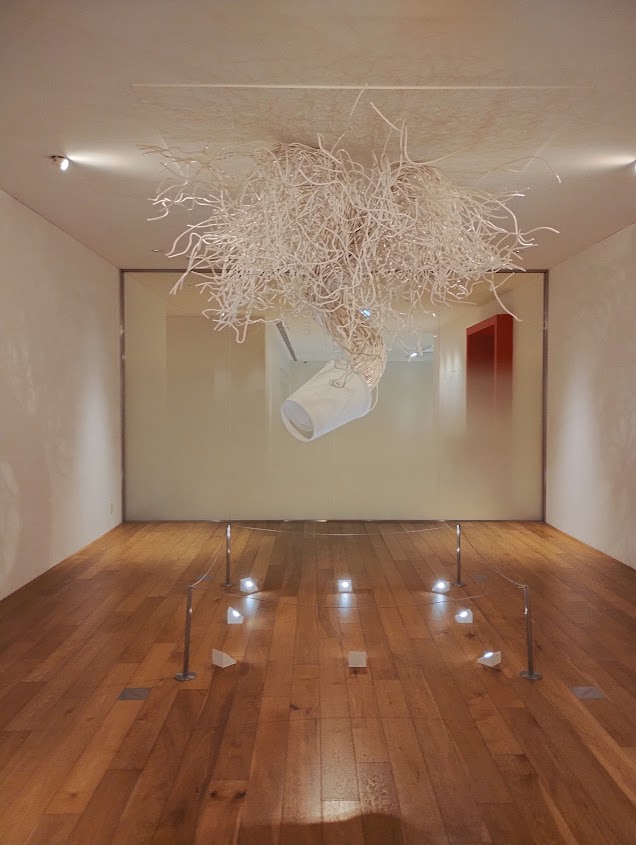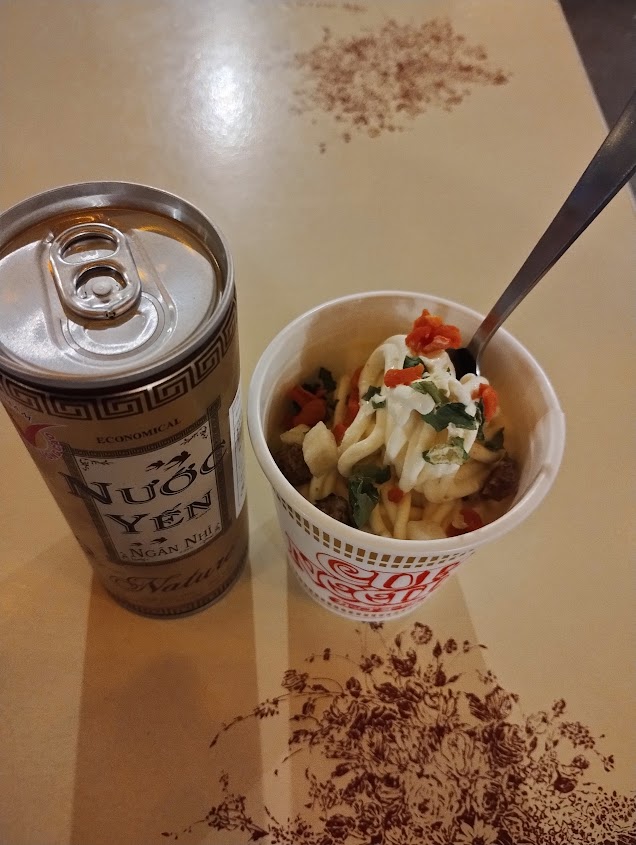By: Isabella Tiberi
Thanks to the many hours of daikyuu I accrued by helping foreigners on cruise ships and being complimented for my English a surprisingly high amount of times, I decided to take a trip down to Yokohama just in time for a special event related to Bleach, the first manga I ever read. 2024 marks the 20th anniversary of the manga; in addition to a pop-up store and a cafe, the Yokohama SkyTower held a special exhibition of artwork and decorations all along the observation deck. Unfortunately, this event will end on the 26th of May so you likely won’t have time to enjoy it for yourself. However, there are plenty of places worth checking out in Yokohama, and in this article, I’ll review my weekend trip and hopefully help you decide if you want to check the city out for yourself!
First things first: transportation. If you’re on this blog then you’re most likely a foreigner with a passport, so I recommend that you put it to good use by booking a Shinkansen rail pass with JR East. The rail pass is perfect for short trips like this since it allows you to book tickets for 5 days at no extra charge; it’s only available to people with a foreign passport, so if you’re going on vacation with a few Japanese friends then they’d have to pay for a regular Shinkansen ticket. I love these 5-day passes because it makes booking the Shinkansen less confusing and more importantly, less expensive than 2 Shinkansen tickets without the pass.
If you don’t have an IC card like Suica or Pasmo yet…dude, get on that! Not only does it make riding buses easier (because you’re not constantly counting out change from your coin purse like a grandma), but Suica and Pasmo both work in Tokyo! No more will you have to fumble at the ticket vending kiosks and feel waves of anxiety as dozens of other commuters wait impatiently behind you to figure out what buttons to press. In this house, we respect and worship the Suica card whenever we’re on vacation.
Using Expedia, I booked a single room for 2 nights at the APA Hotel and Resort Yokohama Bay Tower. It was a 10 minute walk from the SkyTower exhibition, a 15 minute walk from the nearest station in Sakuragicho, and it was a nice hotel that fit within my price range. My 3 day/2 night stay in a single was roughly 38,000 yen; that came with two breakfast vouchers at the all-you-can-eat restaurant on the 3rd floor, a cute little skincare sample package, and a yukata for you to wear in your room and to the onsen within the hotel. If you’re lucky like me, you also get a fantastic view of Yokohama Cosmoworld from your window. Considering all the amenities on site (restaurants, the onsen, a Family Mart on the 4th floor, laundry and vending machines) and how close it is to major attractions in the city, I think it was definitely worth the price. One additional selling point of APA Yokohama is their efforts to be eco-friendly, so they also provide toiletries made of recycled materials and allow you to request the cleaning staff to tidy your room without washing and replacing the sheets. And with the chic organic restaurant in the building, the only potential damage will be to your wallet!
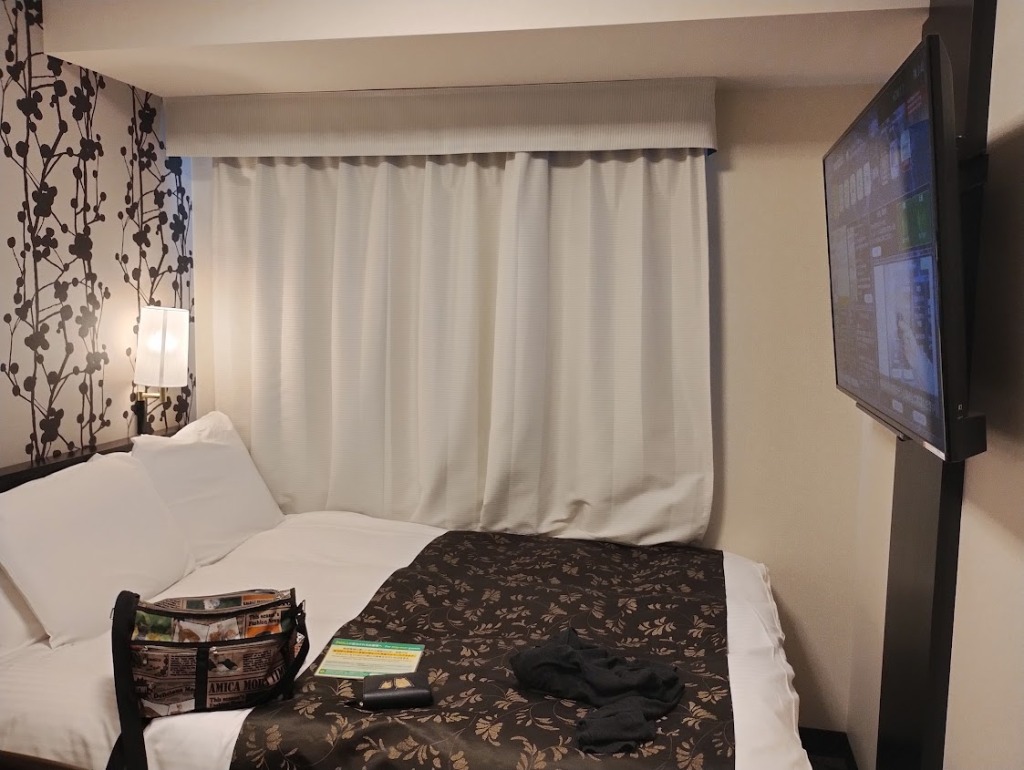

I had booked a reservation at the Bleach collaboration cafe on the afternoon of the 18th, so that left me with an entire morning to explore and see what caught my eye on Google Maps. Chinatown was a bit too far for me to get to, but I was very close to the Yokohama Cup Noodle Museum and the Kanagawa Prefectural Culture Museum. I’m an academic vacation girlie: my ideal spots for trips are aquariums, science centers, and museums. And while the idea of a museum dedicated to instant ramen might sound a little strange, I left with a deeper appreciation of how much history there is behind every little sealed styrofoam cup. General admission was only 500 yen, and I was able to join the workshop where you make your own ramen cup! Each cup costs 500 yen, and you get to decorate the outside with whatever art you’d like; then, you rotate the special crank that turns the cup upside down to perfectly catch the instant noodles, select your toppings, and vacuum seal a cute little tote bag to bring your edible souvenir home.
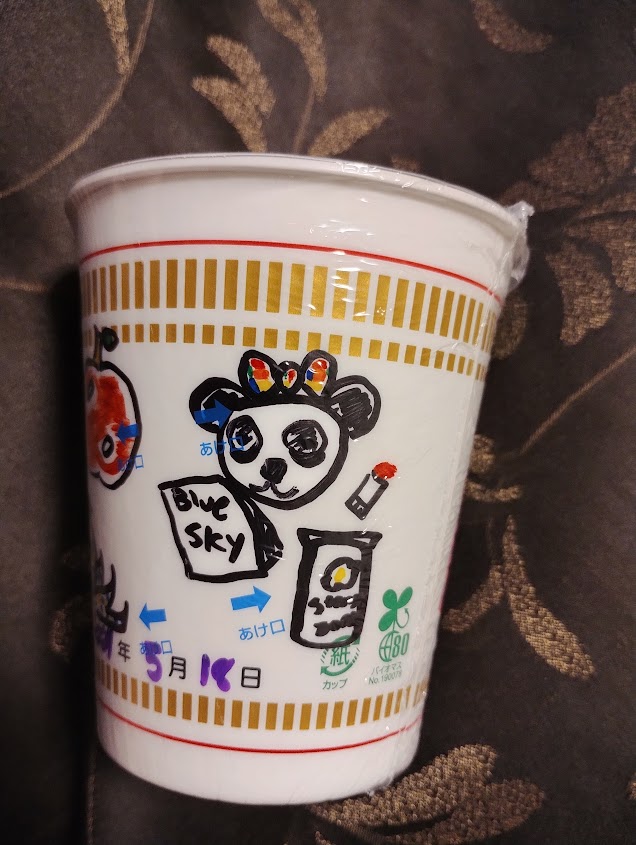
As for the rest of the museum, it details the history of Momofuku Ando and how he invented instant ramen. Like a lot of Japanese innovations that took the world by storm, we can trace Cup Noodle’s origins back to the postwar occupation of Japan after World War II. Ando observed how so many people were starving and homeless after the bombings, and had also noticed how much the Japanese government was encouraging families to eat bread due to the surplus of wheat flour supplied by the American occupying forces. The answer from the Ministry of Health was simple: bread was easier than noodles to produce on the massive scale needed to try and feed everyone in need, and it was much more shelf-stable. Ando decided to take matters into his own hands and develop a method to produce noodles by himself to feed the Japanese public. This desire to bring good to the world in the form of a hot meal is summed up in his personal motto: “Peace will come to the world when the people have enough to eat.”
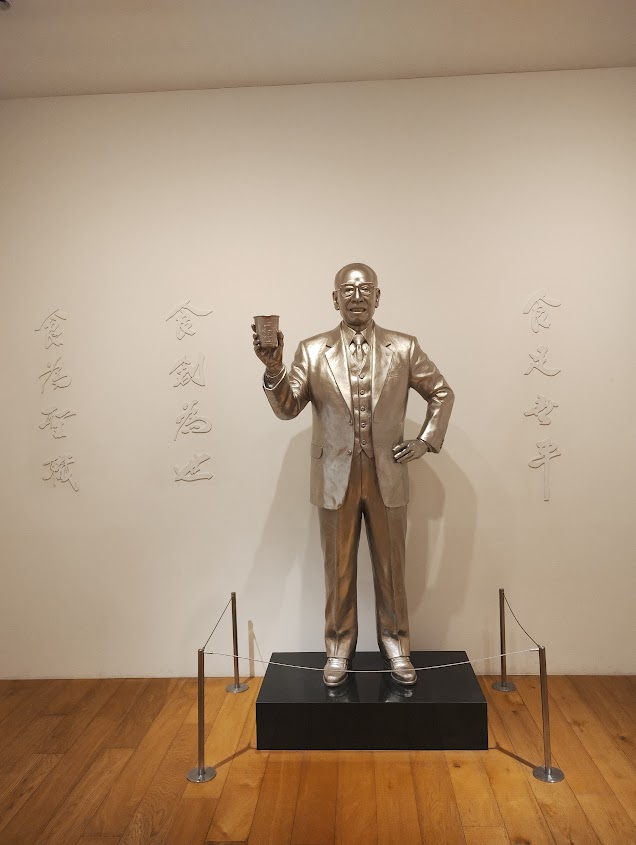
One piece of information that is nowhere to be found in the museum however has to do with Ando’s origins. You see, the inventor of Japanese instant ramen wasn’t originally Japanese. Momofuku Ando was born in the then-Japanese-occupied island of Taiwan as Go Pek-Hok (吳百福) and his ethnicity is actually Hoklo Chinese. He grew up in Tainan with his grandparents and after receiving a small loan of 190,000 yuan, opened his own textile company in Taipei. He first came to Japan in 1933 to study economics in Osaka and eventually renounced his Japanese citizenship to keep his ancestral property on Taiwan after its liberation in 1945…only to then become a Japanese citizen again in 1966 after marrying his wife Masako and taking her name.
I can understand why it would be a little awkward to explain that the inventor of an iconic Japanese food is actually a Taiwanese man, but I still wish that the museum included more about Ando’s past. It’s not like the museum shies away from how foreigners inspired Ando’s breakthrough success with instant ramen; the cup we all know and love only came to be in 1971 after he noticed that American customers would break the noodles in half, put them in a paper cup, and poured hot water over them. He realized that a cup with a narrower top would be much more efficient for customers to prepare and eat the noodles, and this design change led to an exponential increase in sales and success. Even back in the 1970s, cultural exchange between my country and Japan was changing the world in surprising ways!
The museum also features a few interesting art installations like this hanging sculpture of an overflowing cup of noodles, as well as a room that displays every single cup of instant ramen in a colorful timeline of the company’s history.
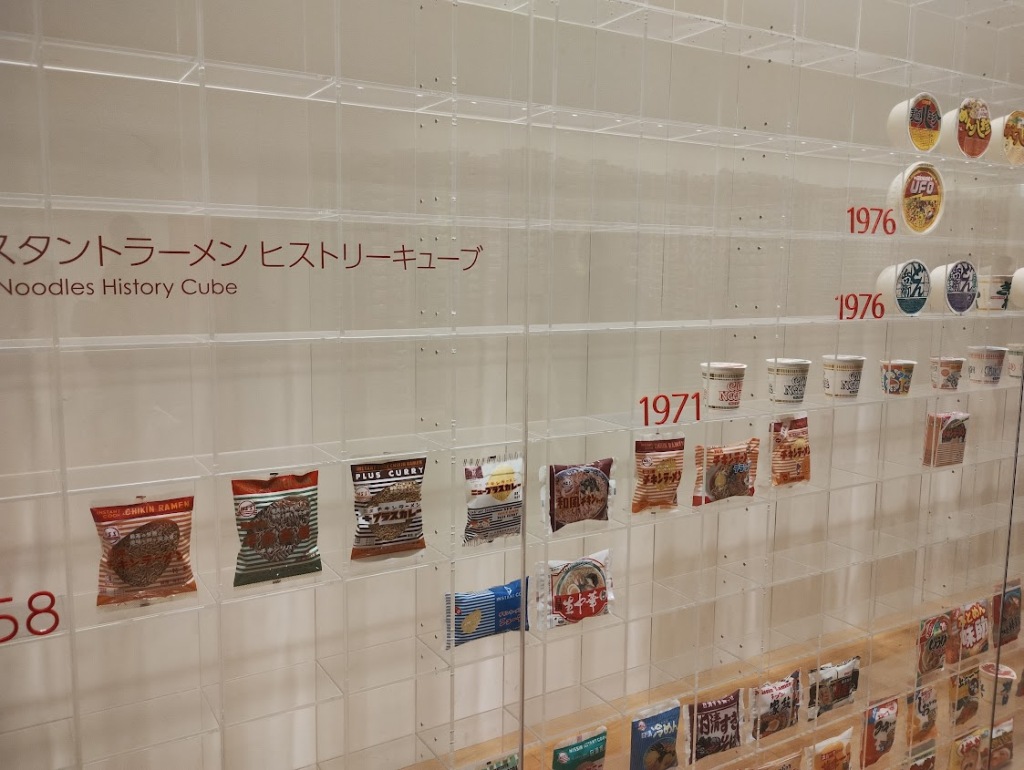
As for food, what kind of ramen museum would this be if there wasn’t a food court dedicated to noodles? On the top floor there’s the Noodles Bazaar, a food court styled like an international market with stalls decorated with advertisements and goods from their respective countries. After ordering from one of the touchscreen kiosks around the room, you’ll receive your food tickets to exchange at each of the stalls. A quick look at the map reveals just how many stops there are on this international noodle tour (or “inter-nood-tional tour”–actually, no. That was awful. I’m sorry): Italian pasta, Chinese Lanzhou beef ramen, cold Korean ramen with kimchi and beef, Kazakhstani lagman, Vietnamese pho, Thai tom yun goong noodles, Malaysian laksa, Indonesian mie goreng, and mini chicken ramen from Japan.
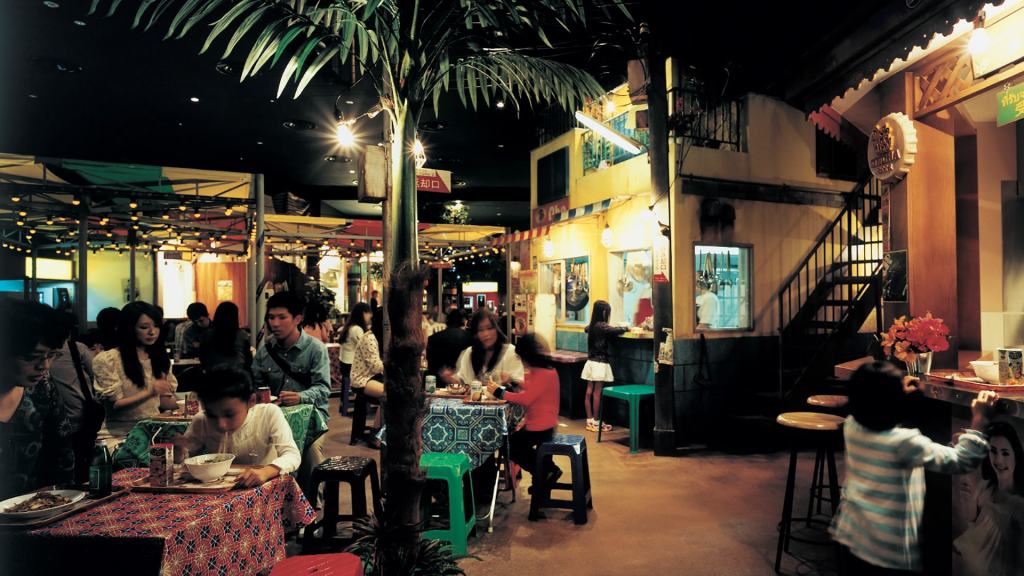
I’d already had a big breakfast from the hotel and I had a reservation at the Bleach character cafe later that day, so I opted out of the main dishes and decided to try an interesting dessert item with a drink: ramen ice cream and a can of Nuoc Yen from the Vietnamese food stall. The ice cream doesn’t have any noodles, but the vanilla ice cream is shaped like ramen and is served in an Instant Curry Ramen cup with toppings straight from the actual soup mix. At first I assumed that this was going to be like German spaghettieis, where the toppings are actually sweets that merely look like curry blocks and vegetables–I learned after taking a giant bite of curry mixed with vanilla ice cream that I had never been more wrong in my life.
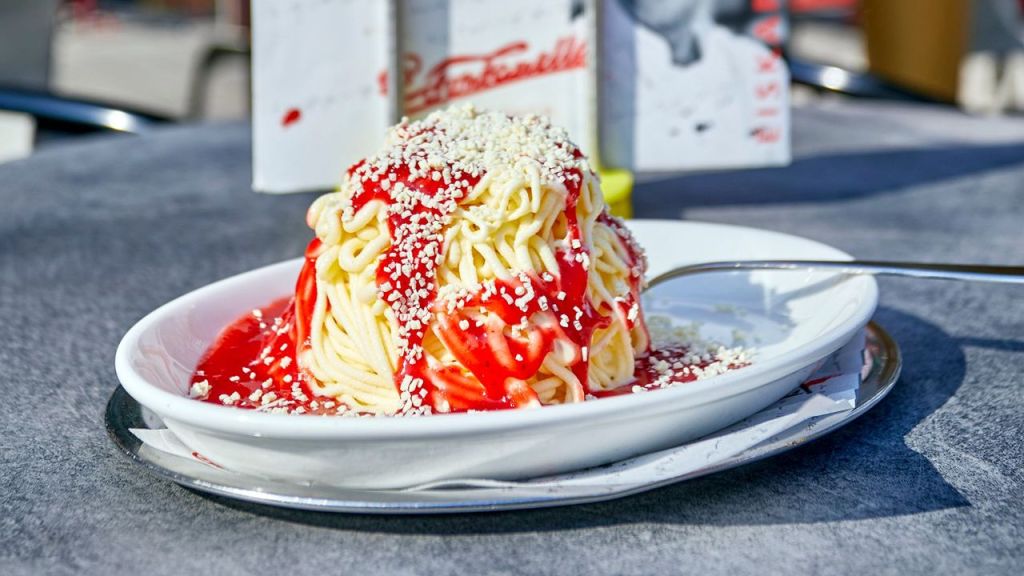
To be honest, it was pretty good! Something about the mild bit of spice and warmth from the curry bits mixed well with the vanilla ice cream, and the crunch of the toppings reminded me of granola or cornflakes. If you’re a sucker for novelty dishes like I am, I recommend it if only to say that you’ve eaten curry ramen ice cream. I also enjoyed the Nuoc Yen even though I had no idea at the time what I was actually drinking. The flavor was sweet but not overbearing and very similar to brown sugar mixed with water. There were little chewy bits inside that I initally thought were chopped up boba or jelly, and after a quick web search I discovered that those white bits were a kind of fungus and that instead of brown sugar, I was drinking a bird’s nest.
In southeast Asia, there’s a remarkable little bird called the Edible Nest Swiftlet. You’ll never guess what’s so unique about their nests; they make their homes entirely out of their own saliva, which hardens and is then harvested by humans to be added to soups and drinks as a popular health ingredient. Allegedly the nests are said to improve kidney health, reduce phlegm, and is even rumored to be an aphrodisiac. Considering how I was going to be at an event filled with attractive anime characters in the next few hours, I was a little worried about that last side effect, but luckily the only reason my face was bright red that day was from the heat of early summer in Tokyo. If you’re ever in Vietnam or at a place where they sell Nước yến, give it a try! It’s refreshing and sweet without being overbearing, and you may even get some health benefits out of it.
Overall, I definitely recommend the Yokohama Cup Noodle Museum to anyone planning a trip to that area of Tokyo. The admission is cheap, it’s got a lot of things to see and enjoy, and it’s fun and interesting for guests of all ages. In the next article, I’ll be reviewing the Kanagawa Prefectural Cultural Museum!
